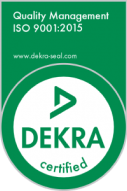A common challenge in higher education often centers around managing technology lifecycles, which can be crucial. Technology is constantly evolving and improving, and hardware can quickly become outdated. At times, even before it has been installed and put into service. In addition, every capital equipment purchase incurs expense costs regarding support agreements, labor for supporting assets, configuring assets, patches, etc.
Technology departments continually work towards addressing the challenges which include, but are not limited to:
- Planning changes, upgrades, and budgeting, including depreciation of assets.
- Management and justification of unplanned cost per incident (i.e., fix on failure) due to asset failure and replacement.
- Mitigating risk related to security, reliability, performance, usability, obsolescence/maintainability, etc.
- Addressing audit findings for at-risk assets no longer supported by the vendor.
- Elevating resource skill sets, knowledge and maintaining technical relevance.
Refreshing technology is of vital importance. The inhibitors to these challenges are often external: IT models driven by departmental projects and CAPEX budgets inherent in a cost center model.
One example of refreshing hardware’s importance is seen in the aviation industry, as outlined in a recent Wall Street Journal article. The Federal Aviation Administration (FAA) issued a “Notice to Airmen” (NOTAM) warning pilots and airlines about the potential risks of using older navigation hardware. The NOTAM stated that some older navigation hardware might not properly process satellite signals transmitted by the next generation of GPS satellites. This highlights the importance of regularly upgrading and refreshing hardware to stay current with the latest technology and ensure systems function properly.
The higher education market greatly benefits from a managed approach to upgrading and refreshing hardware. With the growing emphasis on technology in classrooms, universities and colleges must ensure that their hardware is up to date to provide students with the best possible learning experience. This includes upgrading and refreshing equipment such as computer labs, classrooms, and lecture halls. Obsolete computer equipment will no longer be able to support the current Operating Systems (OS), thus no longer be supported for security patching. They may also not support modern software. Upgrading hardware also allows institutions to adopt new and innovative teaching methods, such as online and blended learning, which are becoming increasingly popular.
Higher Education can mitigate some of these costs by leveraging cloud technologies for servers. Using capital server purchases requires purchasing hardware to meet peak demand, thus, over-purchasing capacity is needed for only 20% of the year. Cloud technologies can provide right-sized servers with in-place server “upgrades” or “downgrades” dynamically. This provides better cost management. It also offers the advantage of reducing the number of servers where a single, more powerful computer can be used to consolidate multiple smaller servers, thus lowering overall cost and support effort.
Yet some hardware assets live on the campus, such as external and in-building network infrastructure and classroom technologies. Failure to keep up with network technologies can translate into poor performance with newer laptops/phones/tablets, etc. In addition, known security vulnerabilities in obsolete equipment pose a significant risk. Cybersecurity audit findings for obsolete network equipment can cost millions of dollars to retrofit.
In conclusion, upgrading and refreshing hardware is essential to maintaining any system’s reliability and efficiency. This is particularly true in industries that rely heavily on technology, such as aviation, commercial, and higher education markets. Staying current with the latest hardware allows businesses and organizations to improve efficiency, stay competitive and provide the best possible service to customers and students. Staying current with technology is a strategic and financial decision. Can businesses afford to wait to invest in technology only after failure?
Leaders need to pay attention to the technology mix within their organization. As technology stacks reach their peak simultaneously, the organization’s resources will be consumed by operational plays while contributing little to strategic development. Consequently, leaders face the challenge of escaping the trap of rigidly staying too long with a set of successful technology ventures. New technology platforms are always needed, and the skills to transform from old to new are demanded.
About Columbia Advisory Group:
Columbia Advisory Group (CAG) is a leading Information Technology (IT) consulting firm. CAG’s team has assessed and helped improve the performance of more than 300 technology organizations and IT departments, including many higher education institutions, state agencies, and Fortune 50 customers. Practice specialty areas include Infrastructure, IT Service Management, Cybersecurity, and A/V Services. CAG improves business outcomes with IT insights and expert technical support. Based in Dallas, Texas, CAG works extensively with clients throughout the U.S. Contact us at info@columbiaadvisory.com.
Tim Taylor
Director ITSM

